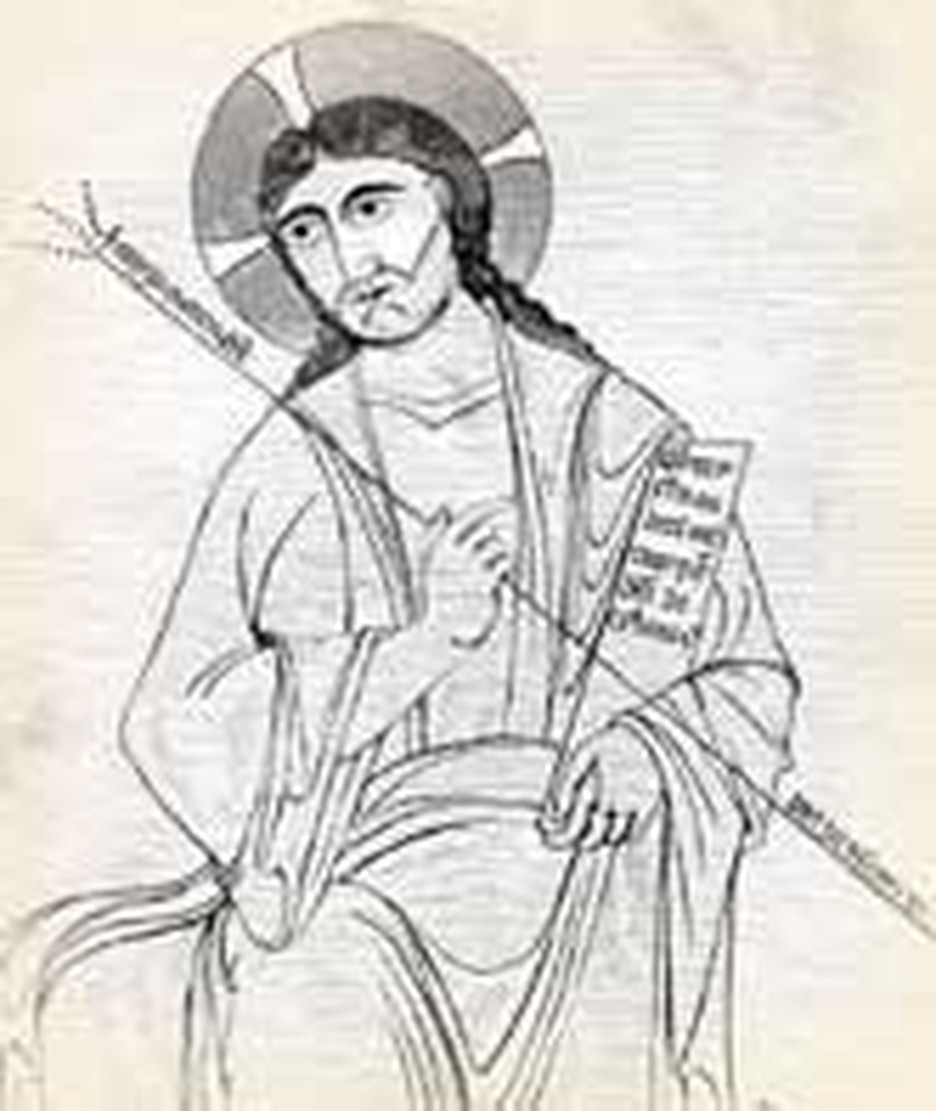
As Dunstan left court, several men jumped him and beat him severely. Then they tied him up and threw him into filthy pit. It was all because of jealousy.
Dunstan, a noble-born lad, had been trained at the school of Glastonbury with its fine library. Afterwards, when he was summoned to take his place in the Anglo-Saxon court, he won so much influence over king Athelstan that the other courtiers hated him. They accused Dunstan of studying paganism and magic and convinced Athelstan to send Dunstan away.
Somehow Dunstan managed to free himself from the deadly hole his enemies dumped him in. He escaped to the home of a friend. One of Dunstan's uncles, a bishop, urged the young man to become a monk. But Dunstan, who had his eyes on a girl, felt he couldn't lead the single life. However, he broke out with hideous sores that he thought were leprosy (probably infection from the sewage he had wallowed in when thrown into the pit). Marriage was out of the question. He decided to enter the church after all.
In his new status, he lived at first as a hermit near Glastonbury. There he played the harp, made crafts and refined the process of casting church bells. Throughout his entire life, he showed himself clever at all manual skills. At least one illuminated manuscript that he created survives. He also spoke or read not only his own Anglo-Saxon tongue, but also Latin, Hebrew and Greek.
While still a hermit, Dunstan became an advisor to Ethelfled, the king's neice. When she died, she left all her money to his care. About the same time his father died. Dunstan now had two fortunes to manage. His influence multiplied. He set out to restore the monasteries destroyed in the Viking raids of the previous century.
In the following years, Dunstan advised England's kings. But when he took the young and headstrong king Edwig to task for improper behavior, Edwig confiscated all his money and Dunstan had to flee, probably to Flanders (Belgium), to save himself and his friends. Edwig soon made enemies of his own people, who threw him out of North England. With England under new leadership, Dunstan went back.
Dunstan became Archbishop of Canterbury. There he pursued a far-sighted policy of converting the Danes, who had conquered much of England, and drawing them into the life of the English church and nation. During the reign of King Edward, rebels tried to crush monasticism. Peace talks were held. During one negotiation, the second floor of the hall collapsed. Dunstan's chair was over a beam and this saved his life. He was the only one who did not plunge to the floor below. Several people died. Enemies said he rigged the collapse.
Some time later, allegedly forseeing his own death in a vision, Dunstan announced it to his congregation. He preached sermons the day before he died, which was on this day, May 19, 988. His last words were, "He hath made a remembrance of his wonderful works, being a merciful and gracious Lord: He hath given food to them that fear Him."
Bibliography:
- Dickens, Charles. A Child's History of England. [sums up the anti-Dunstan position pretty viciously]
- "Dunstan, Saint." Dictionary of National Biography. Edited by Leslie Stephen and Sidney Lee London: Oxford University Press, 1921 - 1996.
- "Dunstan, St." The Oxford Dictionary of the Christian Church. Edited by F. L. Cross and E. A. Livingstone. Oxford, 1997.
- Hook, Walter Farquhar, 1798-1875. Lives of the Archbishops of Canterbury. London, R. Bentley, 1865 - 1884.
- McKilliam, Annie E. A Chronicle of the Archbishops of Canterbury. London: J. Clarke, 1913.
- Toke, Leslie A. St. L. "St. Dunstan, St." The Catholic Encyclopedia. New York: Robert Appleton, 1914.
- Various encyclopedia and Internet articles such as http://www.britainexpress.com/History/saxon/dunstan.htm.







